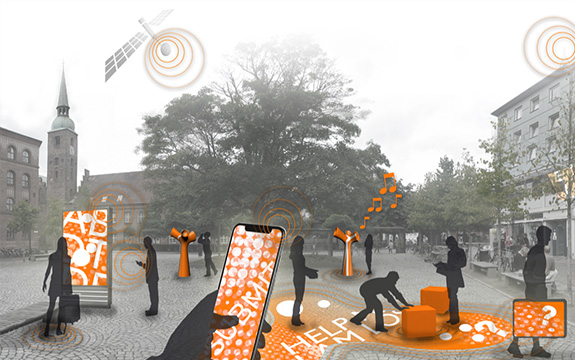Designing future living spaces for smart cities

In Summary
- The design of smart city living spaces will take into account a focus on people, an awareness of technologies and the importance of placemaking
The design of future spaces for living in the smart city involves three key considerations:
- A focus on people. Who are the people who will be living there? What are their needs and expectations? How can we get them to participate in designing their futures?
- An awareness of technologies. What kinds of technologies will they rely on to support their everyday activities? How will they interact with and control these technologies? Do these technologies already exist, or will emerging new technologies be the key to digital cities of the future?T
- The importance of placemaking. What kinds of places are needed for these people and their devices? How will we work together to make these cities liveable, sustainable and flexible? How do we make future cities places that we want to live in?
The Future Spaces for Living program at Swinburne’s Smart City Research Institute (SCRI) brings together researchers interested in designing different aspects of future spaces for living. This includes understanding and designing for and with people, designing interactive technologies and designing places where people can work and play in a positive and sustainable way. To support this, the program has three main research streams: participative citizens, interactive technologies and places for people.
Participative citizens
Participative citizens are those involved in the design of their future living spaces. This is supported through user-based research and in designing cooperatively with users. Co-design practices and participative design methods give different stakeholders, including the citizens, opportunities to be heard and to contribute to future designs for our cities and the interactions we have with them and with each other.
Understanding users through different data gathering practices such as observation, interviews and surveys, give our citizens a voice in the planning and development processes that shape the places they will inhabit. Social media and digital ethnographies give insight into people’s everyday responses and opinions. This helps shape and support community behaviours and engagement in issues and decision-making that affects them when and where they live.
A focus on designing for the wellbeing of citizens, and encouraging their participation in creating healthier places for living, lead communities toward supporting socially and economically sustainable futures for all.
Interactive technologies
Interactive Technologies are technologies that people use to support their everyday activities and information needs. Digital technologies can focus on user-centred and user-friendly designs of human-computer and human-machine interactions. This involves looking at innovative and creative ways to use existing technologies to support people’s needs, as well as exploring and investing in emerging technologies such as virtual and augmented reality, which can illustrate people’s current and envisioned practices.
Big data is useful to people when it can support their everyday activities, but also when it can be visualised in a form that gives people some control over how it is used. This ability to monitor and interpret current city activities gives us insight into the inspiration for designing future spaces for living. Making data gathering apps that appear as games to the users, combined with artificial intelligence processing of that data, offers feedback and access to people’s activities and opinions in a way that also provides a satisfying, fun and personalised user experience.
Places for people
Places for people should be designed to be liveable, supportive and sustainable. Involving architects, urban planners and interaction designers is essential to design smart places for people to live that connect into the greater city ecosystem.
The scale of places for living and working is changing. Factors such as population growth, an ageing population and an attitudinal shift to ownership among millennials are affecting the way that we think about future habitat requirements, both urban and natural.
People’s perceived future needs for space are changing, in terms of the types of places and the amenity of these places. To this end, future city scenarios are needed to explore the increased density of housing to support a reduction in travel times, alternative “green” modes of transport such as cycling, and greater community and neighbourhood interaction and involvement in the welfare of each other.
In both work and home situations, we are seeing design scenarios to support the shrinking of space allocated per person. This is made possible by the fact we own fewer material objects like music and books. There are new opportunities in the short-term rental of clothing and appliances. Resource sharing in the form of share cars and office hot-desking is already accepted practice. We are also moving toward combined flexible work/living spaces, virtual work spaces and community housing.
There are also the ‘in-between’ places to consider. These are the public spaces that link places of work and home. How can the design of space and the technologies that pervade these spaces ensure the provision of happy lifestyles and support citizen well-being? Can these spaces be designed to provide a haven from the stresses of high density living?
These are issues that we are tackling in the Future Spaces for Living program. Through transdisciplinary teams of researchers and practitioners collaborating on citizen-centric investigations, designs, planning and engineering, we are working toward a smart city that is for and about its inhabitants. Our research is underpinned by innovative design practices to drive the envisioning and enactment of a sustainable future while using best practice to satisfy citizen needs and desires and provide positive and fulfilling future spaces for living.
By Associate Professor Jeni Paay, Program Director, Future Spaces for Living, Smart Cities Research Institute

